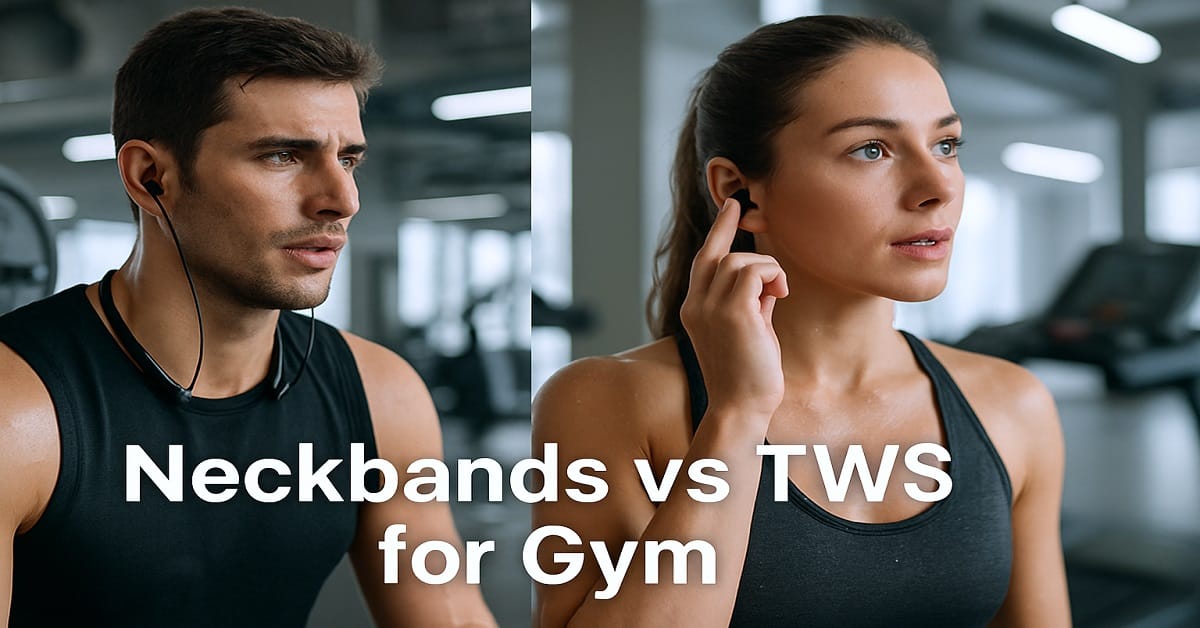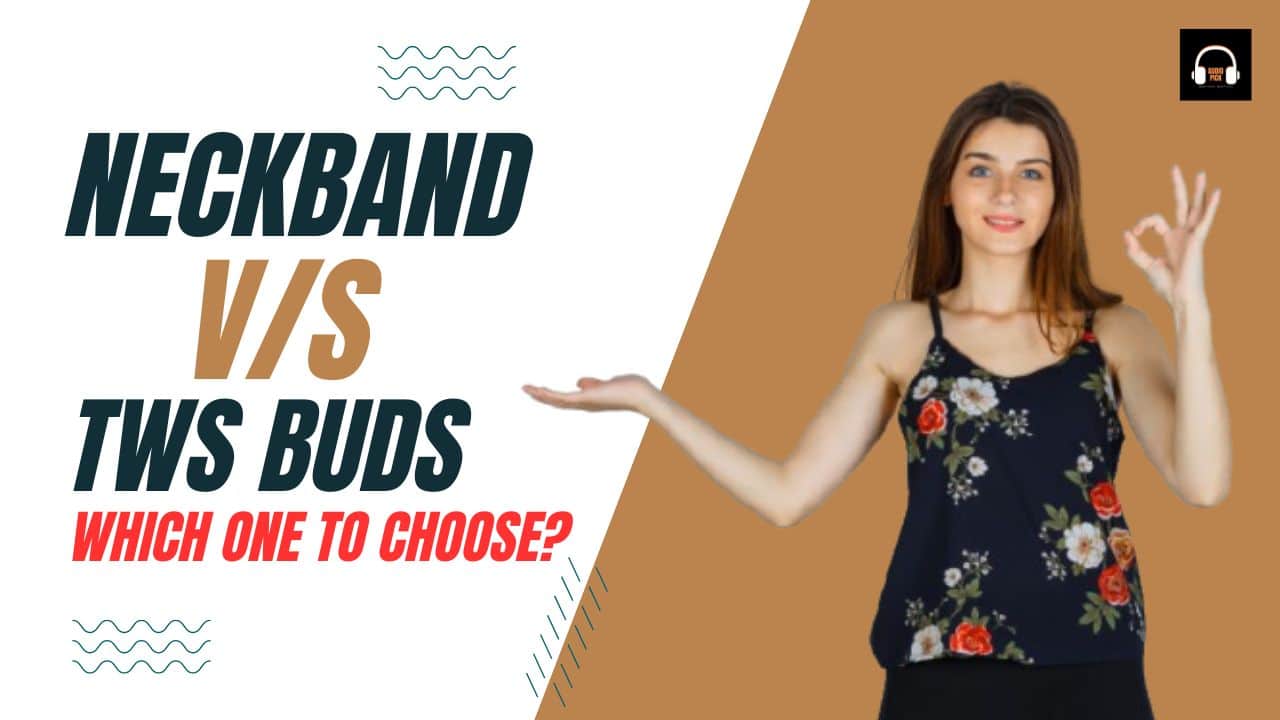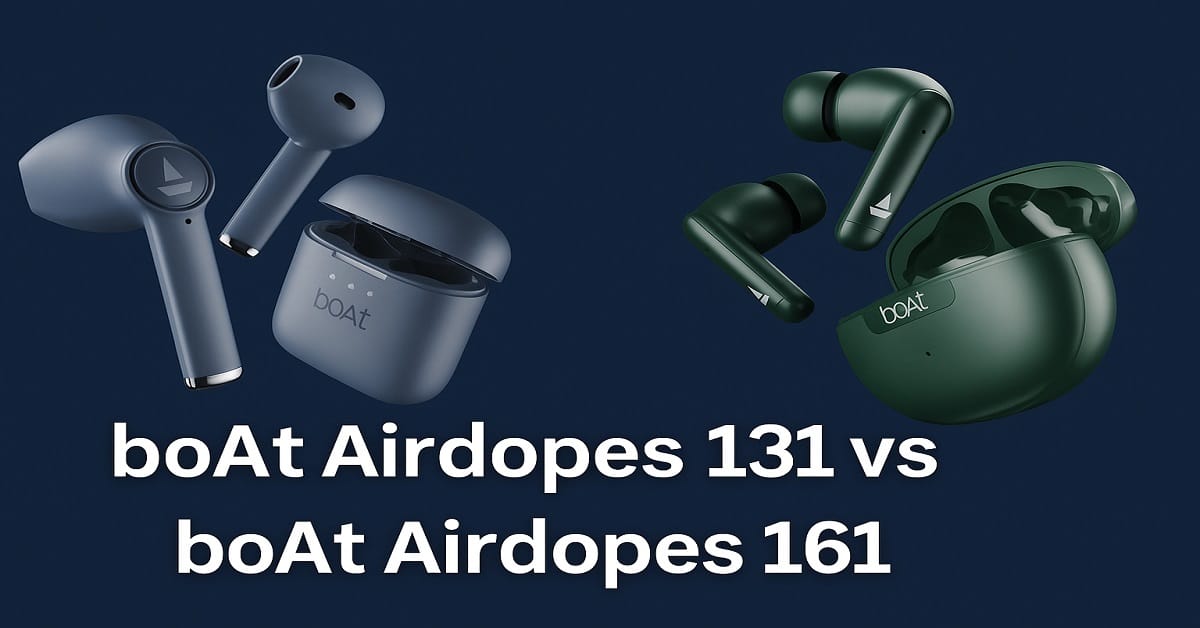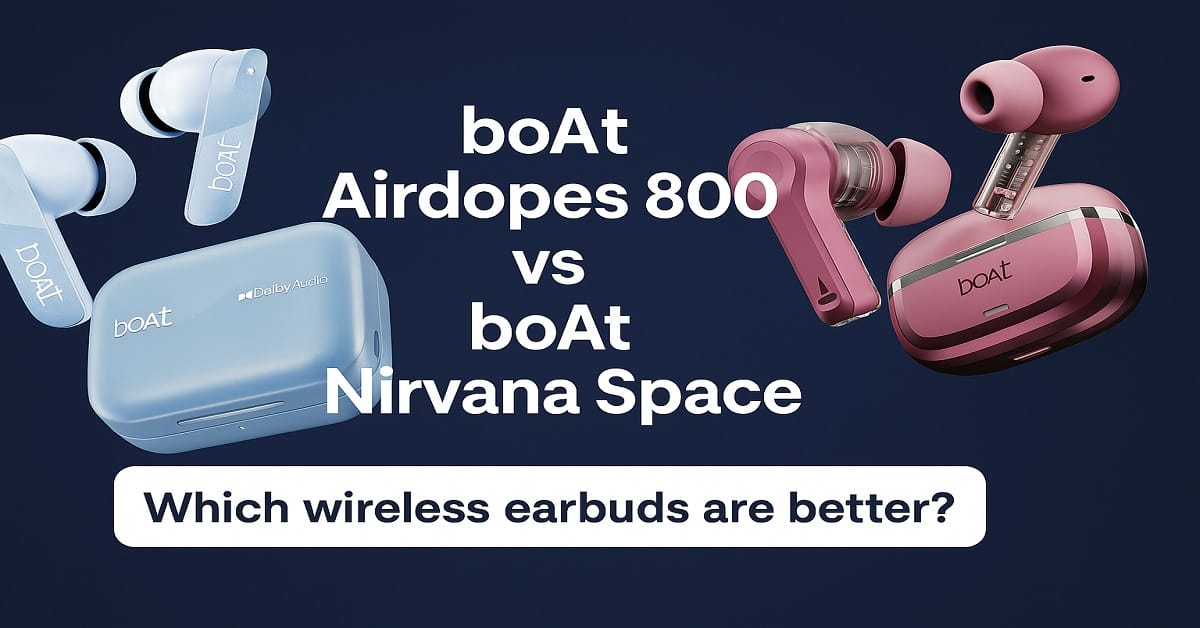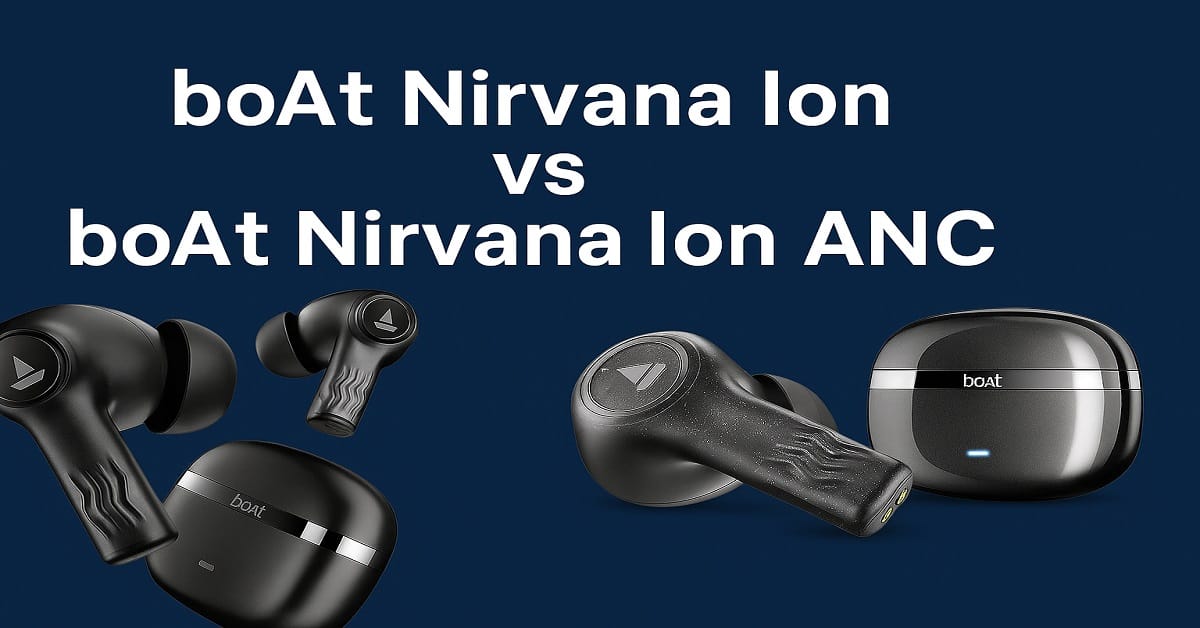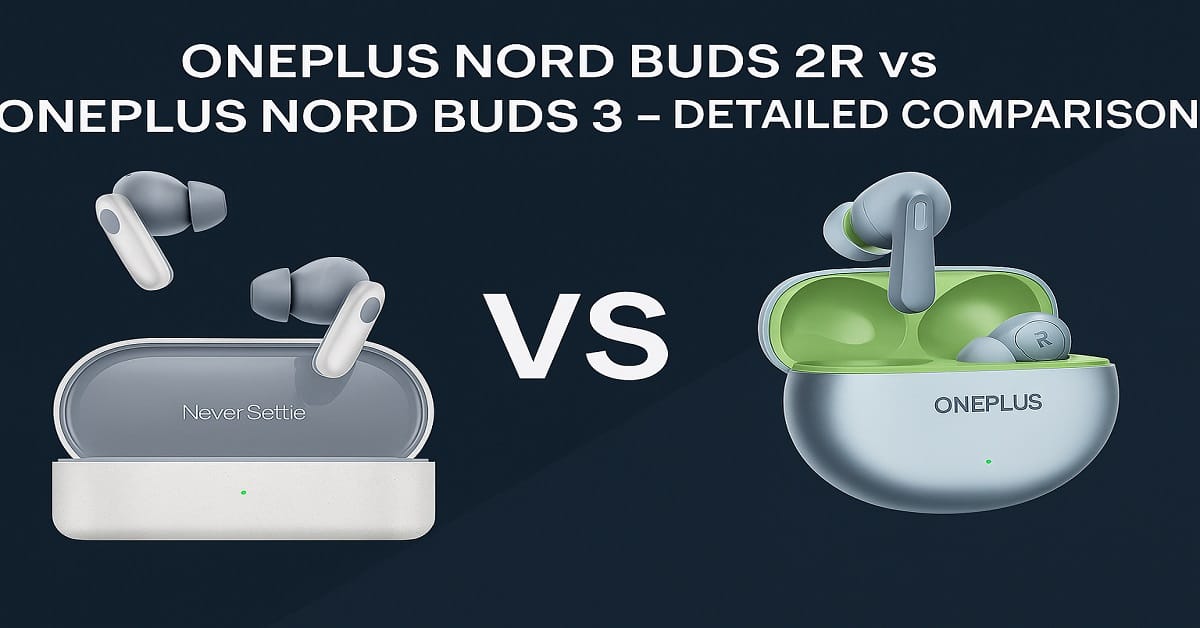Finding the right wireless earphones for your gym workouts can make a big difference. Whether you’re lifting weights, running on a treadmill, or stretching during yoga, the wrong audio gear can ruin your flow. That’s why many fitness lovers often debate: Neckbands vs TWS (True Wireless Stereo) – which is better?
In this article, we’ll explore the real-world pros and cons of neckbands vs TWS for gym use, considering things like fit, battery life, sweat resistance, durability, and price. By the end, you’ll have a clear idea of what suits your workout needs.
If your workouts involve high movement and long sessions, neckbands are the more reliable pick — they stay secure and last longer. But if you prefer total freedom with zero cables, TWS earbuds offer a cleaner, more modern experience. For most gym users in 2025, TWS earbuds win in comfort and portability, while neckbands remain unbeaten for durability and battery life.
What Are Neckbands and TWS Earbuds?
Neckbands are Bluetooth earphones with a flexible band that rests on your neck. The earbuds are connected by wires to the band, which typically contains the battery and controls. They’re designed for long usage and offer a secure fit.
TWS (True Wireless Stereo) earbuds are completely wireless. Each earbud works independently, and they’re stored and charged inside a small case. TWS earbuds are trendy, compact, and cable-free.
1. Comfort and Fit – Who Wins for Gym Use?
Neckbands:
- Designed to rest on your neck, offering a stable feel
- Usually come with magnetic earbuds that click together
- Lower risk of falling out during high-motion workouts
TWS:
- No wires – just insert and go
- Some models include silicone fins or wings for extra grip
- Lighter but may fall out if not fitted properly
Verdict:
If your workouts involve a lot of movement, neckbands offer better security. TWS earbuds feel more natural but need the right fit.
2. Battery Life – Which Lasts Longer?
Neckbands:
- Offer 20 to 40 hours on a full charge
- Many support fast charging – 10 mins charge gives 10–15 hours
- No case to worry about
TWS:
- Each bud lasts around 4 to 8 hours
- The charging case extends battery life up to 25–30 hours
- Buds and case both need charging
In addition to long battery life, neckbands are also easier to charge with Type-C cables, and they often support dual pairing, so you can connect your laptop and phone at once. TWS earbuds may need a special cable to charge the case, and if you lose it, you’re stuck.
Verdict:
Neckbands win here, especially for users who don’t want to charge every day.
3. Sweat and Water Resistance – Built for the Burn?
Neckbands:
- Basic models have IPX4/IPX5 (splash-proof)
- Higher-end ones have better protection but cost more
TWS:
- More gym-focused models come with IPX5 to IPX7 ratings
- Some are even usable during heavy rain or intense sweat sessions
Verdict:
TWS has the edge, but only if you choose the right sweat-resistant model.
4. Call Quality – Clear Chats During Sets?
Neckbands:
- Microphones are closer to your mouth
- Generally better call quality in noisy environments
TWS:
- ENC or AI mics in premium models
- Budget TWS can struggle during calls in a gym
Verdict:
Neckbands are more reliable for clear calls, especially under ₹2000.
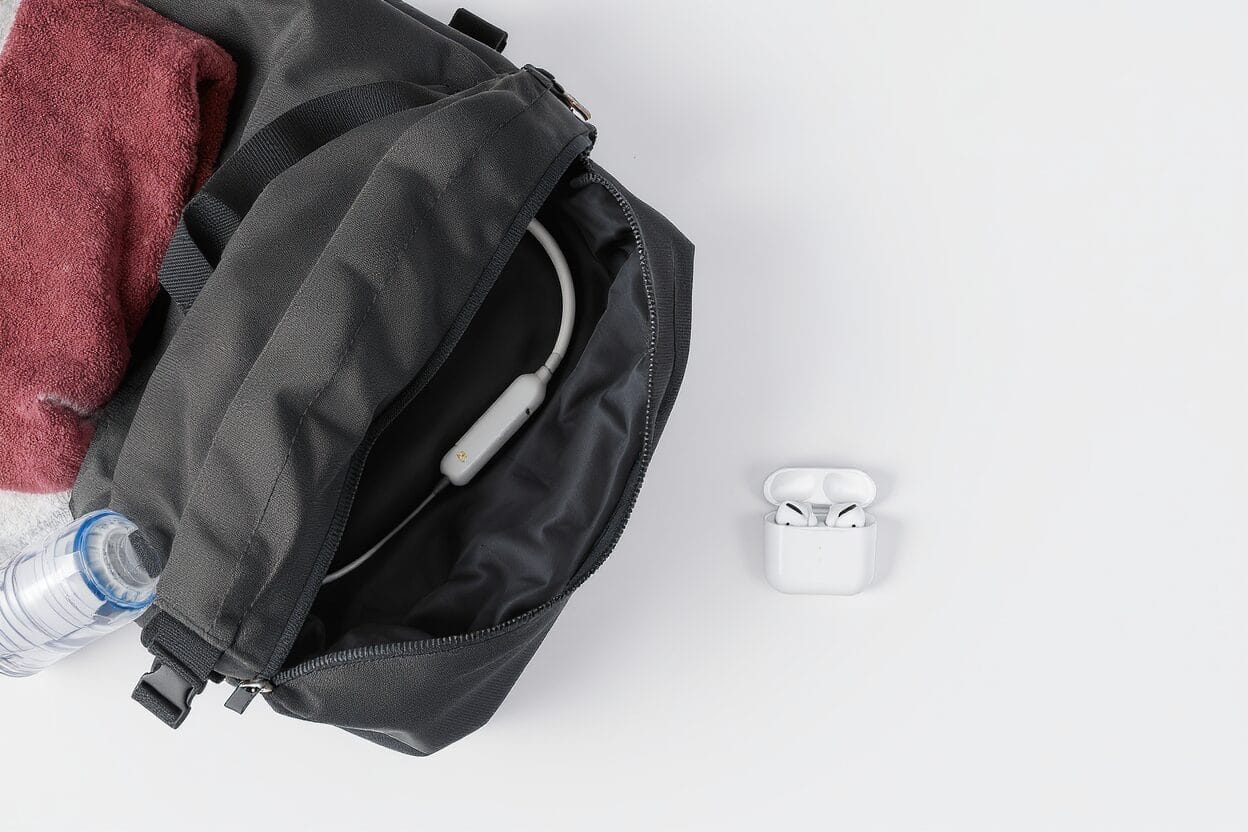
5. Portability – Who’s Easier to Carry?
Neckbands:
- Worn around the neck – no case needed
- Slightly bulky for pockets
TWS:
- Extremely compact with charging case
- Pocket-friendly and stylish
TWS earbuds might win in portability, but they also require extra caution. You have to keep them inside the case when not in use, and forgetting the case means you can’t charge them. Neckbands don’t have that problem. You just wear them — even when not listening to anything — like a fashion accessory.
Verdict:
TWS earbuds are more portable and travel-friendly.
6. Durability – Which One Can Take a Beating?
Neckbands:
- Less risk of loss – just hang around your neck
- Wires may wear out over time, especially with rough handling
TWS:
- Small and easier to misplace
- Buds can be damaged if dropped
Many users drop their TWS buds while removing their gym shirts or wiping sweat. It only takes one drop on a hard surface to damage the mic or distort the sound. Neckbands have fewer moving parts and are easier to control via buttons that don’t require tapping your ear during a workout.
Verdict:
Neckbands are more durable in day-to-day use.
7. Price – Which Gives More Value?
Neckbands:
- You get better features like longer battery and clearer calls for under ₹2000
- Budget-friendly without sacrificing performance
TWS:
- Stylish but compromises on battery and sometimes mic quality
- Premium features like ANC cost extra
Verdict:
Neckbands offer more value for money if you’re on a tight budget.
8. Sound Quality – What Keeps You Motivated?
Neckbands:
- Often come with bigger drivers (10mm–14mm)
- Tuned for punchy bass and loud volume
TWS:
- Better stereo separation in mid and high-end models
- Lower-end models might sound flat
Verdict:
Neckbands usually deliver more bass and power in budget ranges.
9. Real Gym Scenarios – Which Performs Better?
| Workout Type | Best Choice | Why |
|---|---|---|
| Weightlifting | Neckband | More stable, better focus |
| Running | TWS | No wires to bounce |
| HIIT Training | Neckband | Less chance of losing earbuds |
| Yoga & Pilates | TWS | More freedom, no cables |
| Outdoor Workouts | TWS (IPX7) | Better water resistance for sweat/rain |
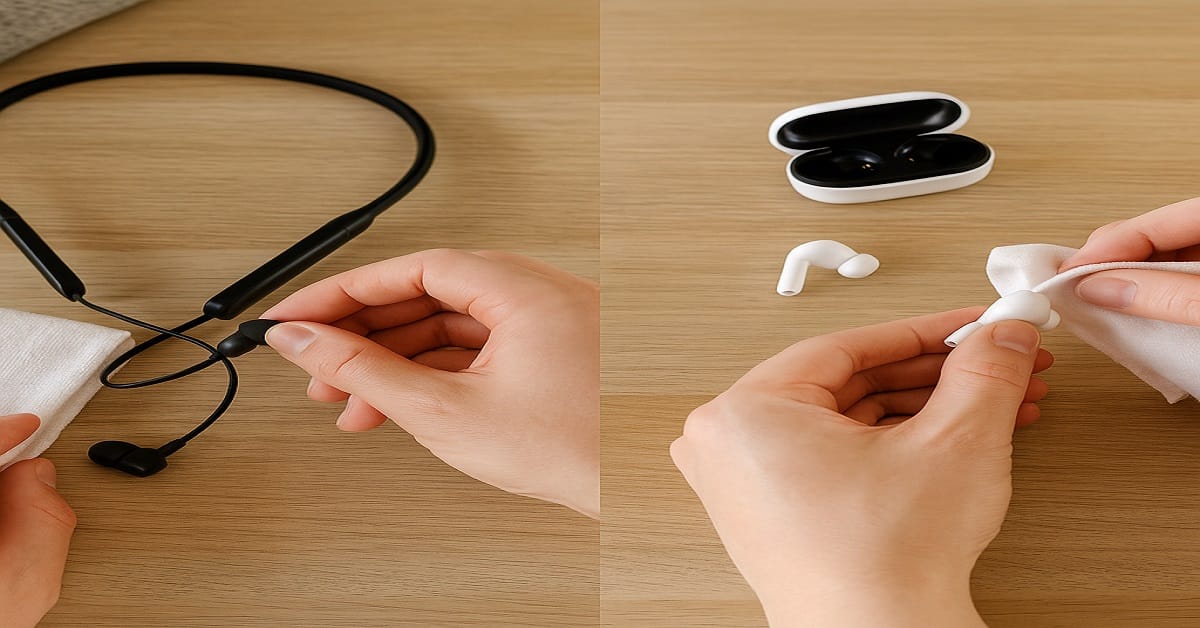
10. Long-Term Use and Maintenance
Neckbands:
- Easier to manage – no need to store in a case
- Can tangle inside bags, but less likely to get lost
- Needs occasional cleaning, especially around wires and earbuds
TWS:
- More prone to getting misplaced or dropped
- The case can attract dust and lint in pockets
- Needs cleaning both inside the case and around mic openings
Verdict:
Neckbands are easier to manage and maintain for regular users.
11. Workout Type vs Earphone Type – Which Pair Matches Your Fitness Style?
Not every gym-goer has the same routine. Some focus on strength training, others on cardio, and some mix in yoga or outdoor running. Here’s how your workout style should influence your earphone choice:
Strength Training (Bodybuilding or Weightlifting):
- Neckbands are a strong fit here. They offer long battery life and are less likely to fall out while you’re lying down on a bench or pushing heavy weights.
- You don’t need to touch them often, and the magnetic buds make it easy to pause music between sets.
Cardio & Running:
- TWS earbuds give more freedom of movement. You won’t have any wire or band bouncing on your neck while you jog, sprint, or cycle.
- Look for models with a secure wing-tip design or memory foam tips that stay snug even as you sweat.
CrossFit or HIIT Workouts:
- These involve fast, explosive movements. A neckband is usually better in these scenarios because you don’t want to lose a bud mid-burpee.
- Some people prefer TWS here, but they must ensure a tight fit and IPX7 rating.
Yoga, Pilates, and Floor Workouts:
- TWS is the better option for stretching, yoga, or mat-based movements. Neckbands can get in the way or feel uncomfortable when lying flat.
- Lightweight TWS models make you forget you’re even wearing them.
Verdict:
There’s no one-size-fits-all answer. Choose based on the kind of workouts you do most frequently.
12. Future-Proofing Your Choice – Is Neckband or TWS More Ready for 2025?
As the earphone market evolves, tech features are becoming smarter. If you’re planning to invest in gear that won’t feel outdated soon, it’s worth asking: which format is more future-ready?
TWS Earbuds:
- TWS is where most innovation is happening. Brands are focusing heavily on features like:
- Active Noise Cancellation (ANC)
- AI-assisted call quality
- Wireless charging
- Gaming modes and ultra-low latency
- They’re already replacing wired and neckband-style earphones in premium segments.
- Newer Bluetooth versions (5.3 and 5.4) are mostly launching on TWS first.
Neckbands:
- While still popular, especially in India, neckbands aren’t seeing as many next-gen features.
- They’re optimized for practicality: big battery, decent sound, and reliable connectivity.
- You may not find ANC or high-end codecs (like LDAC) in budget neckbands.
Verdict:
If you want a future-proof, tech-forward audio experience, TWS earbuds are where the market is heading. But if you want reliable performance today, neckbands still deliver better value at a lower price.
Comparison Table – Neckbands vs TWS for Gym
| Feature | Neckbands | TWS Earbuds |
|---|---|---|
| Fit & Stability | Stable during motion | Depends on ear fit |
| Battery Life | 20–40 hrs | 4–8 hrs (buds), 30 hrs with case |
| Sweat Resistance | IPX4–IPX5 | IPX5–IPX7 |
| Call Quality | Better in budget range | Good in premium models |
| Portability | Worn on neck | Super compact |
| Durability | Less prone to loss | Easy to misplace |
| Price-to-Features | High value | Style-focused |
| Sound Quality | Bass-heavy, louder | Clearer mids/highs in premium |
Final Thoughts – Which Should You Buy for the Gym?
A great gym session isn’t just about lifting heavy or running far — it’s about staying in the zone. Your music, podcast, or audio coach needs to be loud, clear, and uninterrupted.
If you prefer practicality, long usage, and call clarity, a neckband is your reliable companion.
If you love clean design, portability, and future-ready features, then investing in a good pair of TWS earbuds is totally worth it.
No matter what you choose, make sure it suits your fitness goals, comfort level, and budget.
Choosing between neckbands and TWS ultimately depends on your fitness routine and personal preferences.
Pros of Neckbands for Gym
- Longer battery life – lasts several days
- Better mic and call clarity
- Stays secure even during heavy workouts
- Affordable and durable
Cons of Neckbands
- Slight bounce during running
- Bulky compared to pocket-sized TWS
Pros of TWS for Gym
- Compact and wire-free
- Ideal for yoga or cardio
- More modern features in high-end models
Cons of TWS
- Frequent charging required
- May fall out if not fitted properly
Verdict: Neckbands vs TWS – The Final Answer
If you’re a regular gym-goer doing weight training, high-intensity workouts, or prefer long sessions without worrying about charging, a neckband is a reliable choice.
But if you’re doing light workouts, running, or yoga – and want style and complete freedom from wires – a good TWS with secure fit and sweat resistance is a great option.
Our suggestion: For under ₹2000, go for a feature-rich neckband for the best balance of value, performance, and reliability. If your budget allows ₹2500+ and you want ultimate freedom, explore gym-ready TWS with IPX5+ rating and secure fit.
More Reads You’ll Enjoy from AudioPick.in
- Best Neckbands for Gym and Running (2025 Guide)
- Top Neckbands Earbuds Under ₹1000 With Noise Cancellation
- Neckband Buying Guide – What Matters in 2025
FAQs – Neckbands vs TWS for Gym
Q1. Can I wear TWS for running?
Yes, as long as they have a secure fit and proper water resistance.
Q2. Which lasts longer without charging – neckband or TWS?
Neckbands generally offer longer battery life without needing frequent recharging.
Q3. Are neckbands better for calls in the gym?
Yes, most neckbands have more stable microphones closer to your mouth.
Q4. Which is more value for money under ₹2000?
Neckbands usually offer better battery life, mic clarity, and sound in this price range.

About the Author
Hari Prasad is the editor of AudioPick.in and a lifelong audio enthusiast. He writes detailed, honest reviews and guides to help everyday users pick the right gear without tech jargon. His personal interest in Bluetooth audio, neckbands, and codecs comes from testing dozens of devices over the past few years.

